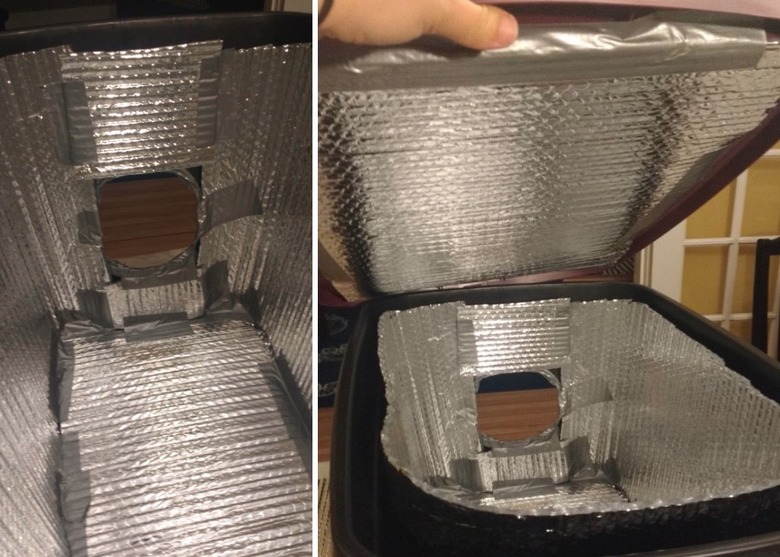How To Make A Cold Weather Shelter For Feral Cats
My beloved and I recently bought our first home! The previous owners left a few things for us: a lovely kitchen island cart, some regrettable paint jobs, a peculiar smell in the basement... oh, and apparently a couple of semi-feral cats.
We named them Vincent Van Gogh (black-and-white male) and Helen Frankenthaler (calico female). They're pretty skittish and they refuse to come inside, but hang out around our house all the time, and they seem to expect to be fed. So we feed them. Because we are both suckers for a pretty cat face.
We're trying to coax them to trust us enough to eventually take them to the vet. But as time passes there's an even more pressing worry: WINTER IS COMING.
Ahem. Anyway.
Vincent and Helen may very well have some place warm to sleep at night already, but what if they don't? Right now they seem to pretty much live on/under our porch. So I decided to build them an emergency cozy spot.
Now, I am not particularly handy. I mean, I can generally aim a power drill in the right direction (the pointy end goes down!). But after the burns, tears, and generally mixed results of my last cat-related DIY, I was determined to make this one even quicker, safer and more me-proof!
Things You'll Need
Things You'll Need
° 20-gallon plastic storage container and lid
° reflective insulation
° duct tape
° scissors
° pen
° sharp knife
It may also be helpful to secure yourself a cat assistant for product testing. This is my cat Satchmo, who can smell a DIY from across the house and is always excited to help.
1. Start by marking and cutting a cat-sized hole in one end of your container.
1. Start by marking and cutting a cat-sized hole in one end of your container.
If you find you're having trouble getting your knife through the plastic, try heating the blade for just a few seconds in very hot water or over a flame; it should cut more easily.
Make sure you're in a well-ventilated area!
2. Line the edges of both your hole and your cut-out circle with duct tape, so that they’re not sharp for entering and exiting kitties.
2. Line the edges of both your hole and your cut-out circle with duct tape, so that they're not sharp for entering and exiting kitties.
The cut-out circle will be the door to the shelter, so if you choose, decorate accordingly. :)
3. Securely tape one edge of the circle to one edge of the hole, making sure that the door can swing in both directions.
3. Securely tape one edge of the circle to one edge of the hole, making sure that the door can swing in both directions.
Product testing by your cat assistant at this point may be helpful.
4. Now it’s time to insulate!
4. Now it's time to insulate!
Reflective insulation works by bouncing heat back at its source, so that by lining a container with it the cats will become their very own little radiators. It's also waterproof, which is important for our outdoor container, so that even if it gets wet the padded interior won't freeze.
Cut a long piece to go around three sides of the container (fewer gaps means less cold leaking in). Cut a piece to line the inside of the lid. Cut two pieces to line the bottom – a double thickness means a little more padding between the cat and the cold cruel porch! Finally, cut small pieces to line the front around the door, as well as the back of the door itself.
5. Tape everything in securely aaaaaand - voilå!
5. Tape everything in securely aaaaaand – voilå!
Okay, so it may not be beautiful. But it will keep a cat warm and dry on a snowy winter evening!
Resist the urge to put soft fabric bedding inside. It will gather moisture and freeze, turning that cozy blanky into an ice cube. If you feel your beloved semi-ferals need something in their shelter to nestle into, you can purchase straw from a garden supply store and put in fresh handfuls every few days throughout the winter.
So that's it! You're done! You made a home! Or at least a little insulted box that a cold critter will be very very grateful for.
My own critter was a little indignant when I told him he couldn't keep it.
Carpe DIYem, friends! And stay warm.
Need more Cuteness in your life? Check out our 15 fantastic DIY toys for your cat, and then like us on Facebook to keep your newsfeed on point.









